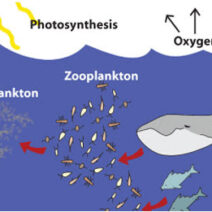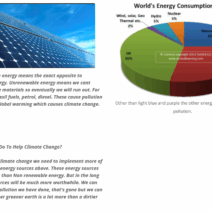The Law of Conservation of Energy is a foundational principle in the scientific realm, dictating that energy cannot be created or destroyed, only transformed from one form to another. This pivotal concept underpins many disciplines, including physics, engineering, and environmental science, and crucially informs our understanding of the natural world and the interactions within it. In an age where concerns over energy use, sustainability, and environmental impact are at the forefront of global discourse, a thorough comprehension of this law is not only beneficial but essential.
To appreciate the significance of the Law of Conservation of Energy, one must first engage with the various forms that energy can take. From kinetic energy, the energy of movement, to potential energy, stored energy waiting to be unleashed, the transfer and transformation of energy manifest in countless natural phenomena. Understanding these forms enhances our insight into many daily occurrences and illuminates the underlying principles at play in more complex systems.
Consider, for example, the case of a swinging pendulum. At its peak, the pendulum possesses maximum potential energy due to its height. As it descends, this potential energy is converted into kinetic energy—the energy of motion. At the lowest point of the swing, kinetic energy is at its peak, while potential energy is minimal. Upon ascending once again, kinetic energy is converted back into potential energy. This cyclical dance persists, underscoring a dynamic equilibrium governed by the conservation of energy.
The concept extends far beyond simple mechanical systems and encompasses chemical reactions, thermal energy, electrical energy, and beyond. In biological systems, photosynthesis exemplifies energy transformation; plants convert solar energy into chemical energy, providing the foundational energy source for nearly all ecosystems. The conversion of energy from one form to another is not merely an academic pursuit; it directly informs modern challenges, such as the transition to renewable energy sources and the quest for sustainable practices.
As we delve deeper into the implications of the Law of Conservation of Energy, it becomes evident that this principle holds the key to understanding efficiency in energy use. Efficiency is a critical metric in a world grappling with climate change and resource depletion. By analyzing energy transformations through the lens of this law, one can recognize how energy losses—often in the form of heat due to friction, resistance, or inefficiencies in processes—can be mitigated. Understanding where and how energy is lost allows engineers and scientists to devise more efficient systems, paving the way for innovations in energy technology.
In industrial processes, for instance, energy conservation can lead to significant cost savings and reduced carbon footprints. By maximizing energy efficiency and reducing waste, industries can align with sustainability goals while enhancing their competitiveness. The importance of this principle is echoed in the development of energy-efficient appliances, vehicles, and renewable energy technologies, where optimizing the transformation of energy is key to minimizing environmental impact.
The law also has profound implications for the preservation of natural resources. As the global community moves towards more sustainable practices, understanding energy transformations helps in the responsible management of these resources. Creating systems that efficiently harness and convert natural energy sources, such as wind, solar, and hydropower, is increasingly crucial. This not only supports energy needs but also mitigates environmental degradation caused by traditional energy sources like fossil fuels.
Moreover, the Law of Conservation of Energy intersects with the debate on climate change. The manner in which energy is produced and consumed fundamentally shapes carbon emissions and, consequently, global warming. By adhering to the principle that energy transformations must be carefully managed, society can work towards minimizing greenhouse gas emissions. The shift towards renewable energy sources is a direct application of this law, as it facilitates cleaner energy transformations and usage.
Looking ahead, innovative technologies are emerging that promise to revolutionize how we interact with energy. Battery technologies that store solar energy highlight the progress being made in energy conservation. These advancements reflect a growing understanding of energy’s conservational principles, aiming for efficiencies that were once thought unattainable. Practical applications of the law can be seen in smart grids, which optimize energy consumption and distribution, thereby enhancing overall system efficiency.
In conclusion, the Law of Conservation of Energy is not merely a scientific principle; it is a fundamental framework that informs our understanding of the world and our impact on it. From the simplicity of a swinging pendulum to the complexities of renewable energy technologies, this law affirms that while energy can change its form, its total quantity remains constant. As we grapple with pressing environmental issues, embracing the implications of this law will empower us to create a more sustainable future, ensuring that energy serves both humanity and the planet in a balanced and responsible manner.








